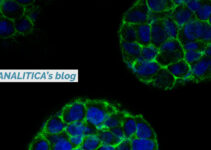Endometriosis is a chronic hormone-dependent inflammatory disease that affects women of reproductive age, and there are an estimated 190 million cases worldwide
This disease is characterized by endometrium-like tissue outside the uterine cavity that causes intense pelvic pain, compromising the quality of life and reducing fertility. Nowadays there is a difficult and long diagnostic procedure (about 7-8 years) based on ultrasound, Magnetic Resonance, serum CA-125 blood tests, and laparoscopy, this is because no specific symptoms or laboratory tests exist. However, late diagnosis leads to a deterioration in patient health and it has a high impact on social and health costs.
Therefore, the biggest challenge is to diagnose endometriosis at an early stage by specific and non-invasive biomarkers. Currently, the CA-125 biomarker is used as a diagnostic aid, and the electrochemical biosensors could answer to the need for sensitive and rapid detection.
Sangili et al. (2020) developed an electrochemical immuno-biosensor base on Au nanoparticles (NPs) and Reduced Graphene Oxide (RGO) to detect CA-125 in endometriosis patients. The electrode, thus constructed, allows an improvement of the biomarker limit of detection due to increased conductivity and area where Au-NPs were fixed (Figure 1a). The current signal decreases proportionally with the increment of biomarker bound on the bioreceptor (Anti CA-125 Ab). The biosensor results obtained from blood samples collected at several stages of the disease were compared with the ELISA Kit. The biosensor shows a higher sensitivity [1], but the complication to using the CA-125 biomarker is that is affected by menstrual physiological changes and gynaecology tumours. Therefore, CA-125 is not a reliable biomarker for the diagnosis, anyway, it helps assess the severity of the disease.
Another biomarker, Glycodelin (GLY), was tested in the development of immune-electrochemical biosensors. This device was developed by Kalyani et al. (2021) and it was based on gold disc electrodes (GDE) (Figure 1b). The biosensor performances were tested in endometriosis patient blood samples, but the specificity and sensitivity results were comparable to those of the ELISA kit. [2]

There is still a lot of work to do, but in these lines, we have shown promising hotspots for further research to develop a biosensor more sensitive than the ELISA kit and able to detect multiple biomarkers such as Gly or HE4 for enhancing the reliability of CA-125, hoping the next World Endometriosis Day would be a better day for more women as possible.
See you next 28th March!
Sources:
[1] Sangili, A., Kalyani, T., Chen, S. M., Nanda, A., & Jana, S. K. (2020) – Label-Free Electrochemical Immunosensor Based on One-Step Electrochemical Deposition of AuNP-RGO Nanocomposites for Detection of Endometriosis Marker CA 125. ACS Applied Bio Materials, 3(11), 7620-7630.
[2] Kalyani, T., Nanda, A., & Jana, S. K. (2021) – Detection of a novel glycodelin biomarker using electrochemical immunosensor for endometriosis. Analytica Chimica Acta, 1146, 146-154.
Author: Dr.Priya Vizzini



